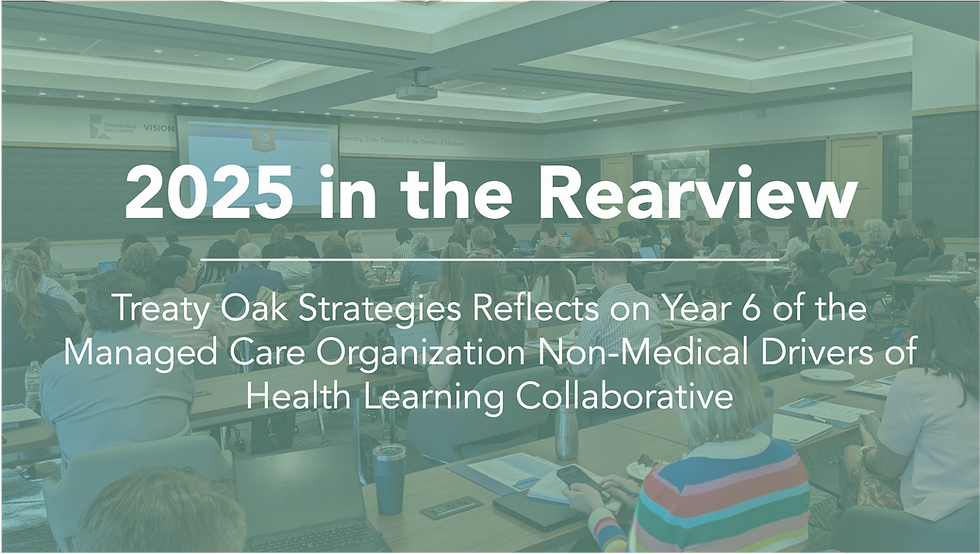Drive a Healthier Future
- Madeleine Richter-Atkinson

- Dec 6, 2023
- 3 min read
Updated: Jan 29, 2024
Addressing non-medical drivers of health (NMDOH) is important for improving health and reducing longstanding disparities in health and health care. NMDOH includes such things as access to healthy food, safe housing, good education, secure employment, and reliable transportation. Timely access to care is one of the main non-medical drivers of health. Transportation services that ensure patients can attend their medical appointments, follow treatment plans, and access preventive care ultimately lead to improved health outcomes. Recognizing the importance of transportation, the Medicaid program covers non-emergency medical transportation (NEMT) services that include rides to doctor's office, dentist's office, hospital, drug store, or any location that provides Medicaid covered health care services, while other states have included additional locations to help ensure access to services that can address NMDOH such as transportation to:
Community based organizations like food banks and churches
Offices to apply or renew benefits such as Medicaid, TANF, SNAP, SSI/SSDI, and VA
Education or training
Employment search
Grocery stores and other essential shopping
Lamaze classes
Parenting classes
Pregnancy classes
WIC appointments (prenatal and postpartum)
Community events
Reliable transportation also plays a vital role in accessing other interventions that can impact health outcomes, such as access to healthy food. Children and pregnant women are at risk for malnutrition when they can’t access healthy, high-quality foods like fresh fruits and vegetables. But many low-income children and pregnant women in Texas do not have easy access to a store that stocks nutritious food. Over 135,000 Texas households do not have a car and live more than one mile from a supermarket or large grocery store, and nearly 7,000 of those households live over 10 miles away from one. Closer stores that sell food, like drug stores and convenience stores, do not carry the same nutritious foods available at supermarkets and large grocers. Improving access to transportation to buy or access healthy foods at a grocery store or community-based organization can improve health outcomes and reduce long term health care costs.

Low-income census tract where 100+ households do not have a vehicle and are more than ½ mile from the nearest supermarket, or a significant portion of residents are 20+ miles from the nearest supermarket. Transportation also connects people to other aspects of life that improve health outcomes, like employment and education. Reliable transportation to work is essential for people to stay healthy — a stable job means income to afford quality housing, healthy food, and health care services. Similarly, making sure children can get to school means improving their health outcomes later in life, and connecting adults to continuing education or vocational training can improve health outcomes by opening opportunities for work. If Texans can’t get to school or work, they can’t access the resources they need to get and stay health.
Texas has invested $142 billion in roads, highways, and other transportation infrastructure to get people to the grocery store, work, and school. But people who do not have a car, don’t live near a bus line, have difficulty driving, or have difficulty affording gas, vehicle repairs, and maintenance can’t benefit from that investment without additional assistance. By covering transportation services to additional locations under Medicaid, Texas can make sure its investments are used by those who need it most.
Texas can leverage Medicaid transportation services to ensure access to important services and resources. Many Medicaid managed care organizations cover additional locations through value-added services and the state can add additional locations as a covered benefit for all Medicaid members. Additionally, value-based care payment models can be leveraged, where health care providers are compensated and evaluated based on the value of care they provide. High-value providers are incentivized to connect their patients to the services they need most to stay healthy. These providers can identify which patients most need transportation assistance and connect them to Medicaid-covered services and community resources, making sure every Medicaid dollar is well-spent.




Comments